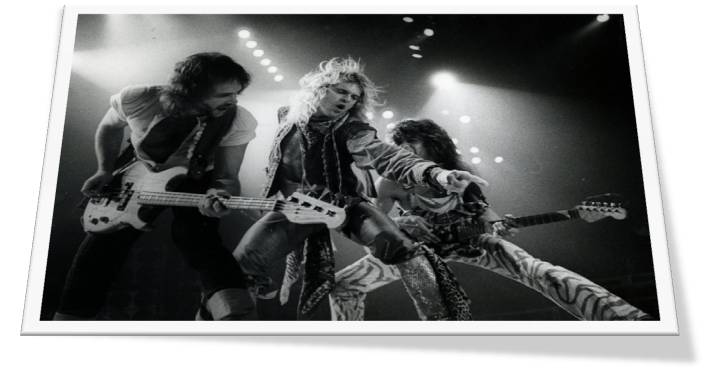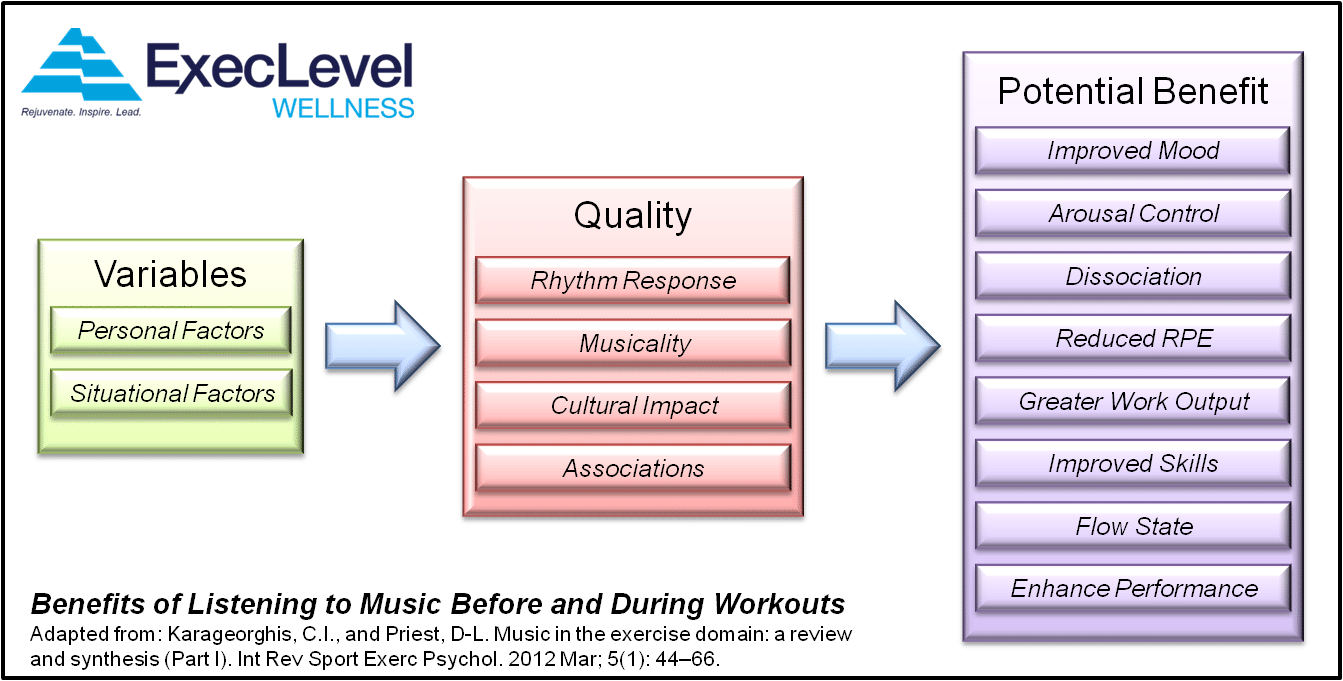 Once you become familiar with a fitness routine you may want to listen to your own music. Believe it or not, scientists have actually investigated the effects of music on workout performance, and in most cases these effects are positive. A statement from a thorough review of the subject states:
Once you become familiar with a fitness routine you may want to listen to your own music. Believe it or not, scientists have actually investigated the effects of music on workout performance, and in most cases these effects are positive. A statement from a thorough review of the subject states:
“Pre-task music has been shown to optimise arousal, facilitate task-relevant imagery and improve performance in simple motoric tasks. During repetitive, endurance-type activities, self-selected, motivational and stimulative music has been shown to enhance affect, reduce ratings of perceived exertion, improve energy efficiency and lead to increased work output”[1,2].
Essentially, music can wake you up, bring added focus and improve your motor skills. During long workouts it can motivate you and increase your output by decreasing your ratings of perceived exertion (RPE). Drilling down, you find that this form of performance enhancing is legal (which is interesting in the sense that the authors make particular note of its legality)[3], that it enhances enjoyment[4], that self-selected music is generally better than on-size-fits-all[5], and that tempo can modulate levels of certain biochemicals in your body (e.g., high-tempo increases epinephrine, aka adrenaline)[6]. Moreover, these effects often combine during certain exercises. For instance, during workouts with a lot of repetitive motion, music lends itself to synchronicity (keeping pace with the music) and dissociation (drawing attention away from fatigue and pain). If used repeatedly during such workouts, this form of conditioned response becomes part of a flow state that can transition to include pre-workouts – tuning out to get you “in the zone” or “psyched up” before the actual workout. In all, these points, and more, lead to the same conclusion – that there are many benefits that come from listen to music before and during workouts.
 Now comes the question of what kind of music to listen to. All things point towards picking music that speaks to you at the given moment/circumstance. Faster rhythm/tempo songs are typically more stimulating than slower songs and a high level of musicality – e.g., repetitive harmony/melody and “hooks” (a phrase/transition that you like and anticipate) – adds to their effectiveness. You’ll probably want to choose music you grew up with, has some emotion to it, and is associated with something motivational.
Now comes the question of what kind of music to listen to. All things point towards picking music that speaks to you at the given moment/circumstance. Faster rhythm/tempo songs are typically more stimulating than slower songs and a high level of musicality – e.g., repetitive harmony/melody and “hooks” (a phrase/transition that you like and anticipate) – adds to their effectiveness. You’ll probably want to choose music you grew up with, has some emotion to it, and is associated with something motivational.
In the end, music is a very personal thing, so tailor your workout tunes to those that are enjoyable and energizing. On a couple of practical notes, if possible listen to your playlist using speakers rather than earphones – if anything not to get tangled up in wires and devices. If you can, play it loud, especially if it’s rock & roll – which is the way it is supposed to played according to numerous song lyrics, album titles and statements from the musicians themselves. Lastly, you may also find that good live recordings carry a different energy than the studio versions, so consider adding both versions to your playlist.
